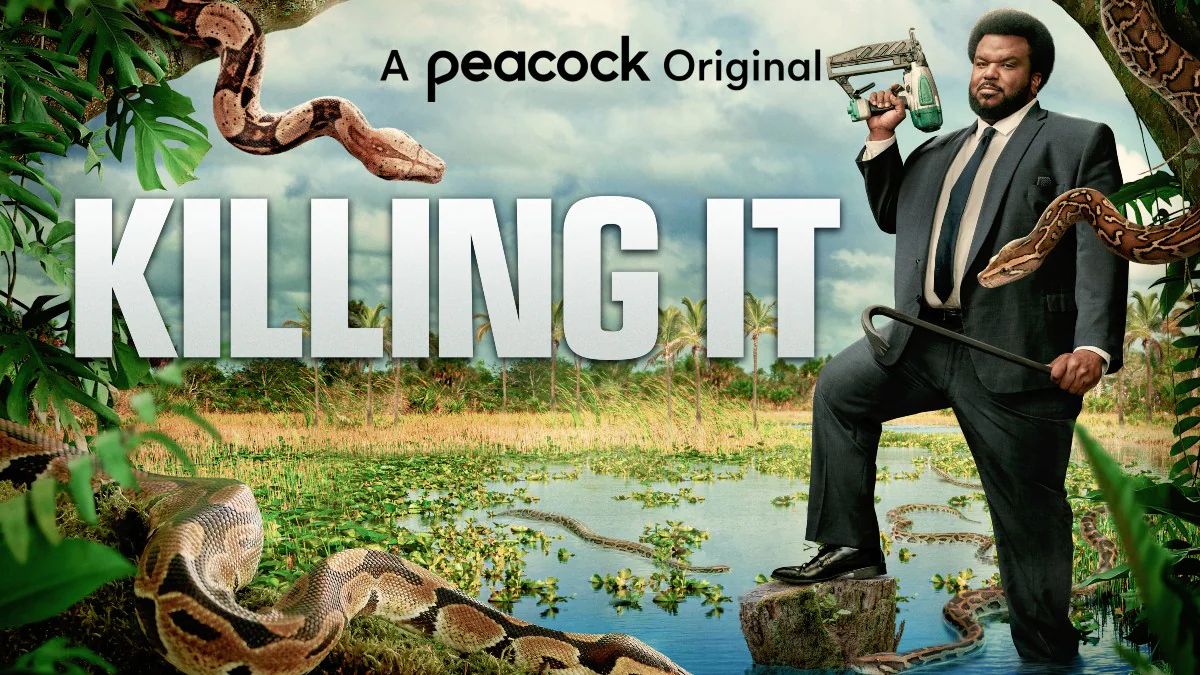The ten-episode series ‘Killing It’ produced by Luke Del Tredici and Dan Goor of Brooklyn Nine-Nine. Thanks to a hilarious performance from Craig Robinson and an assist from O’Doherty, Killing It gets off to a shaky but promising start. As the story progresses, the characters takes precedence over the humor. ‘Killing It,’ depicts a divorced guy named Craig (Craig Robinson), who works as a homeless security guard. He is cash-strapped and requires $20,000 to acquire land. His loan, however, is turned down by the bank. Craig is disappointed when he meets Jillian (Claudia O’Doherty), an Australian Uber driver who tells him about her side job as a snake hunter. Jillian then suggests that the two work together to capture more invasive Burmese pythons than anyone else in order to win a state-sponsored monetary reward. Despite the show’s lighthearted tone, it paints a dark image of everyday life and the lengths to which people will go to acquire a sliver of the utopian lifestyle that society accepts. Now you might be wondering Is Peacock’s Killing It series based on true events, if the plot has any truth to it. So, here are the specifics.
Is the Peacock’s Series Killing It based on a true story?
‘Killing It’ isn’t based on a true story, to be sure. The series, which is set in Florida, depicts the realities of the classic American Dream as well as the hardships that come with late-stage capitalism and class strife. Dan Goor and Luke Del Tredici, who have proven their mettle with ‘Brooklyn Nine-Nine,’ opted to use the comedic series to illustrate the topics that affect people the most. “We love all the ambitious, challenging, thematically-rich series that populate the current peak-TV landscape. We also love jokes. So, we tried to make a show that could deliver both,” So, in a joint statement, Dan and Luke said.
“We wanted Killing It to explore America’s quasi-religious obsession with entrepreneurship and wealth, and we also wanted it to be funny. Really, really funny. Plus, we wanted it to have big snakes.” Given the tight line they had to walk between the comedy and tragedy of Craig’s life, their mission was not simple. It was reportedly made easier by the skilled Craig Robinson, with whom the creators had previously collaborated.
Dan and Luke praised the actor, saying,“His hilarious, effortlessly charming performance grounds even the wildest comic moments in something deeply human and relatable,” Given the show’s unusual premise, Robinson was delighted to be a part of it. “There was just something about it. I was like, I don’t see anything like this on TV.” Of course, the actor’s fascination with snakes was certainly a key selling point when he agreed to join the show. “Snakes get a bad rap,” Robinson said, defending the reptiles, “between the Bible and Indiana Jones.”
The snakes in the show are a mix of artificial snakes, CGI creations, and live reptiles, the latter of which Robinson was ecstatic about. Despite the show’s undeniably bizarre setting, the fundamental topics it covered were all too familiar. Despite being wrapped in humorous jabs, the show’s central character’s penniless life before his tenure as a snake hunter paints a gloomy image of the reality of the American lifestyle. It also focuses on the widespread desire among people to live an idealistic life in order to fulfil the so-called American dream.
While capitalism and widespread class divide push individuals to work long and hard hours in order to achieve a semblance of luxury, reality often leads them further away from the glitzy image of a model lifestyle. To emphasise, while ‘Killing It’ is not based on true events, Craig’s struggles and actions match current events. While ordinary citizens want to be model citizens, their circumstances frequently place them in unfavourable positions that force them to make desperate decisions. The creators have hit the spot with the series, giving the audience a reflection of their own problems.
